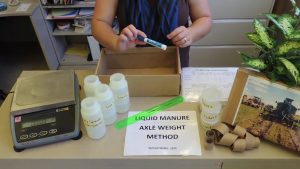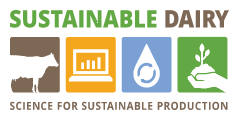Many states have regulations that require education for livestock producers and manure applicators. Adults that must attend these types of programs are often there solely to fulfill requirements and are not willing learners. While regulations may specify topics that must be addressed, most do not spell out teaching methods for these educational programs. It is well known that active learning promotes better retention of the material. In Nebraska however, these programs traditionally have been a combination of pre-recorded and live PowerPoint presentations as they are easier to develop and for educators that may not be manure experts to host. In recent years, the Nebraska Animal Manure Management team has been working to make their manure training program more interactive. This workshop highlights hands-on activities related to odor management, stockpiling and transporting manure, and equipment calibration. Audience members are encouraged to bring examples of hands-on activities that they are using to share with others.
Purpose

The objective of this workshop is to encourage idea-sharing and collaboration in the development of activities and teaching techniques to better manure-related programming across state lines.
Lessons Learned in Nebraska in 2019
Hands-on activities have enhanced our programming in Nebraska by increasing participation during our training events. Participants can no longer sit back and watch videos (or pretend to watch videos). While we do not require testing to receive certification, we feel that we have really improved our program. We received more written feedback about the program in the “comments” section of the evaluation and often received praise for the instructors, which we had never gotten before. For most of the activities that we made major changes to, there was about a 20% improvement in the number of attendees that selected moderately high to significant knowledge improvement (3 or 4 on a scale of 0-4) when compared to the previous year’s evaluation results. Because on average we also had a 13% improvement for activities that were not drastically changed, this result may be skewed, but is still an interesting change. Looking at the data makes one wonder whether the increased interaction between and amongst participants and instructors resulted in higher marks overall because participants were generally more satisfied with the program – even those parts that were not changed.
Authors
- Leslie Johnson, University of Nebraska – Lincoln, leslie.johnson@unl.edu
- Rick Koelsch, University of Nebraska – Lincoln
- Erica Rogers, Michigan State University
- Dan Andersen, Iowa State University
Additional information
- Download manure calibration activity lesson plan (Nebraska)
- Download example setbacks and stockpiling activity and instructor cheat sheet (Nebraska)
- Download example youth manure activities (Michigan)
The authors are solely responsible for the content of these proceedings. The technical information does not necessarily reflect the official position of the sponsoring agencies or institutions represented by planning committee members, and inclusion and distribution herein does not constitute an endorsement of views expressed by the same. Printed materials included herein are not refereed publications. Citations should appear as follows. EXAMPLE: Authors. 2019. Title of presentation. Waste to Worth. Minneapolis, MN. April 22-26, 2019. URL of this page. Accessed on: today’s date.



 ost basic then drilling down to peer-reviewed publications, data from life-cycle assessment studies and models related to the topics. The Virtual Farm focuses on decision makers and stakeholders including consumers, producers, policymakers, scientists and students who are interested in milk production on modern dairy farms. The top entry level of the site navigates through agricultural topics of interest to the general public. Producers can navigate to a middle level to learn about practices and how they might help them continue to produce milk for consumers responsibly in a changing climate while maintaining profitability. Featured beneficial (best) management practices (BMPs) reflect options related to dairy sustainability, climate change, greenhouse gas emissions, and milk production. Researchers can navigate directly to deeper levels to publications, tools, models, and scientific data. The website is designed to encourage users to dig deeper and discover more detailed information as their interest develops related to sustainable dairies and the environment.
ost basic then drilling down to peer-reviewed publications, data from life-cycle assessment studies and models related to the topics. The Virtual Farm focuses on decision makers and stakeholders including consumers, producers, policymakers, scientists and students who are interested in milk production on modern dairy farms. The top entry level of the site navigates through agricultural topics of interest to the general public. Producers can navigate to a middle level to learn about practices and how they might help them continue to produce milk for consumers responsibly in a changing climate while maintaining profitability. Featured beneficial (best) management practices (BMPs) reflect options related to dairy sustainability, climate change, greenhouse gas emissions, and milk production. Researchers can navigate directly to deeper levels to publications, tools, models, and scientific data. The website is designed to encourage users to dig deeper and discover more detailed information as their interest develops related to sustainable dairies and the environment.